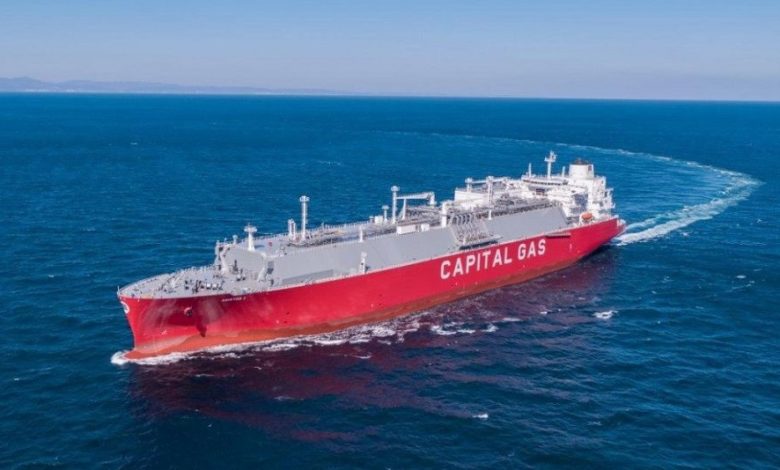
Evangelos Marinakis has shown his hand in the much hyped nascent liquefied carbon dioxide (CO₂) trades.
Marinakis’s Capital Gas Ship Management Corp has come onboard a project in South Korea to develop and commercialise 30,000 cu m liquified CO₂ carriers.
Lloyd’s Register (LR) and the Liberian International Ship and Corporate Registry (LISCR) have awarded design approval to Hyundai Mipo Dockyard (HMD) for the development of the world’s first 30,000 cu m CO₂ carrier. The new carrier will incorporate a new type of steel in its tanks making scantling lighter whilst keeping the tanks’ structural integrity intact. This innovation allows an upscale in the size of the CO₂ carrier, improving storage and transportation, something shipbuilders were not able to do with more conventional materials.
Capital Gas has come onboard the project, advising on operational and commercial matters.
Miltos Zisis, managing director, Capital Gas, said: “We see the move to the transportation of CO₂, as a natural extension of our existing commercial and technical management expertise, which underlines our commitment to playing a significant role in the carbon value chain and the advance of decarbonisation of the shipping industry and beyond”.
HMD has now developed three different CO₂ carriers – a 12,000 cu m CO₂ carrier with high pressure cargo tanks, 22,000 cu m CO₂ carrier with low pressure cargo tanks and this latest 30,000 cu m design which comes with low pressure cargo tanks.
Many other owners are getting into this up and coming trade. Furthest down the track is Japan’s Mitsui OSK Lines (MOL), which last year invested in Norway-based Larvik Shipping, a pioneer in this unique trade.
Currently, the maximum capacity for transporting liquefied CO₂ is approximately 3,600 cu m, or roughly 1,770 tonnes in dedicated CO₂ tankers predominantly with specialist operators such as Larvik leading the way.
Earlier this year MOL and Mitsubishi Shipbuilding showcased a concept design for an ammonia/liquefied CO₂ carrier with a carrying capacity of 50,000 cu m. It has since received an approval in principle from ClassNK for its large CO₂ carrier design, capable of transporting 1m tons of CO₂ every year.
Knutsen NYK Carbon Carriers (KNCC) has an approval in principle (AiP) for its recently developed high pressure liquid CO₂ tank system, potentially unleashing a far larger carrying capacity for the growing gas trades. KNCC is a new joint venture company established by the Knutsen Group and Nippon Yusen Kaisha (NYK) to provide CO2 transportation and storage solutions.
Hyundai Mipo’s sister firm Hyundai Heavy Industries (HHI) has come up with a 40,000 cu m liquefied CO₂ carrier design and is also working with compatriot owner Hyundai Glovis on a 74,000 cu m version.
South Korea’s other shipbuilding majors – Samsung Heavy Industries and Daewoo Shipbuilding & Marine Engineering – have both debuted their own designs.
